Marks & Spencer ~ Plymouth, Devon.
Client : Marks & Spencer.

In 1882 a Jewish immigrant by the name of Michael Marks arrived in Britain from Belarus and began working as a pedlar.
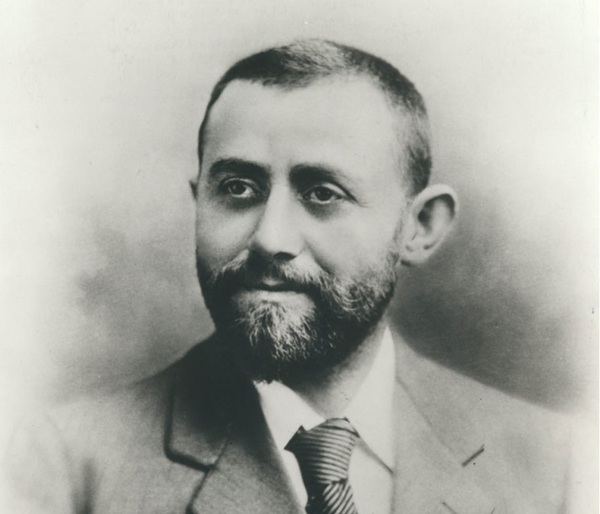
MICHAEL MARKS 1859 – 1907.
With limited funds and knowing hardly any English he secured a start up loan opening his first ‘Penny Bazaar’ stall in Leeds at Kirkgate market, adding the slogan ‘Don’t ask the price, it’s a penny’. Just over a decade later, to support his growing business, Michael joined forces with Tom Spencer, a senior cashier from the wholesalers Dewhirst and then on the 28th of September 1894, Marks & Spencer was born. The rest, as we all know, is history. During the Second World War, outside of London, Plymouth had been the most heavily bombed city in the country, its Medieval centre decimated during the Blitz. After the war, Plymouth City Council decided to completely rebuild the city centre, so, during the late 1940’s and early 1950’s, that is exactly what they did. Plans were submitted and ‘A Plan For Plymouth’ was selected by the renowned architect and leading town planner Sir Patrick Abercrombie. The new city centre was set out on a grid system of right angled streets with its buildings, clad in Portland stone, based on the ‘Beaux Arts’ style of architecture. You’ll find Marks & Spencer at the top of Cornwall street where we were asked to look at some masonry repairs to the front elevation.

First a scaffold was erected to gain full access to the elevation.
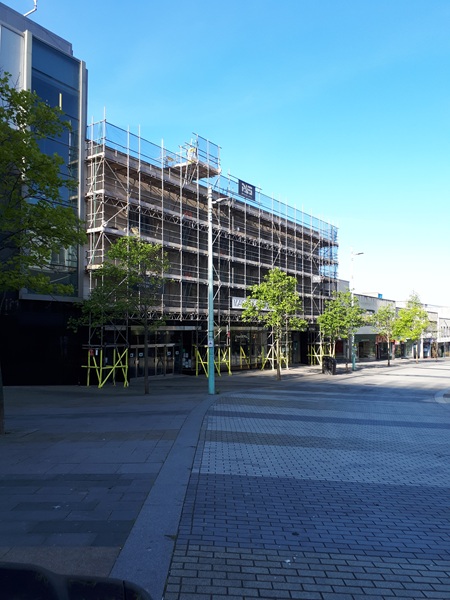
The main façade was clad in panels of re-constituted Portland stone. At some point in time the joints to all the cladding had been pointed in using a silicone mastic sealant. This had been done presumably to keep damp out, but in essence this had created problems. By sealing up the joints with mastic, moisture was unable to escape and in turn causing issues to the elevation.

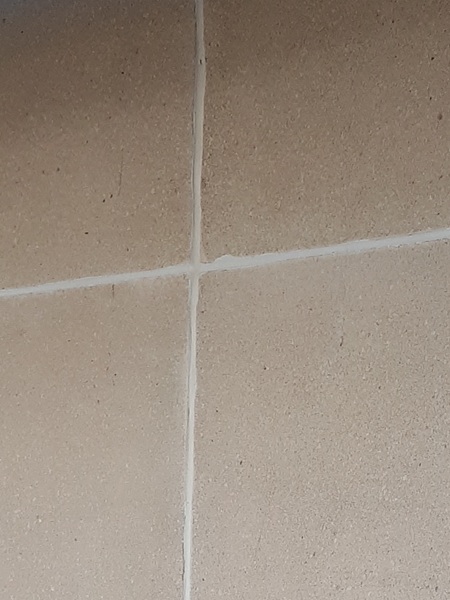
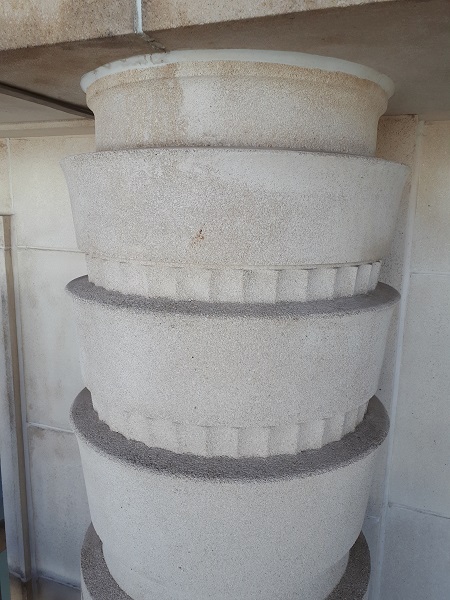

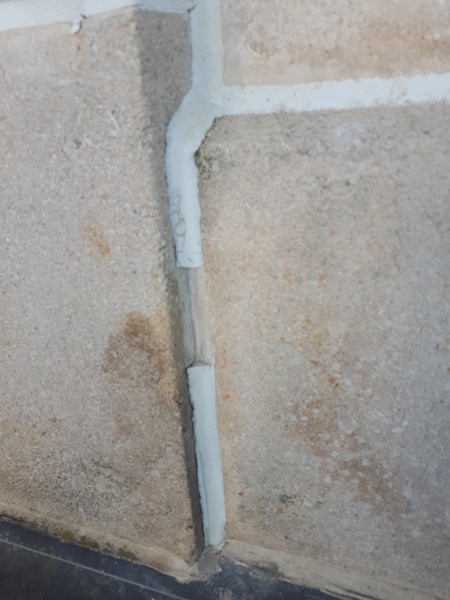
Every single joint on the whole elevation had the mastic cut out and removed.

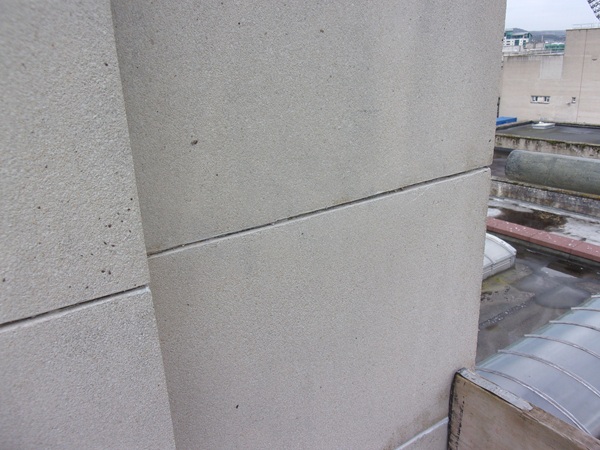
This was then repointed using a lime based Portland stone mortar.
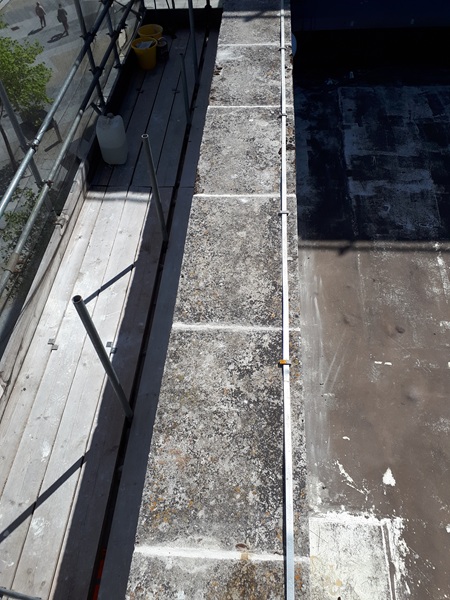
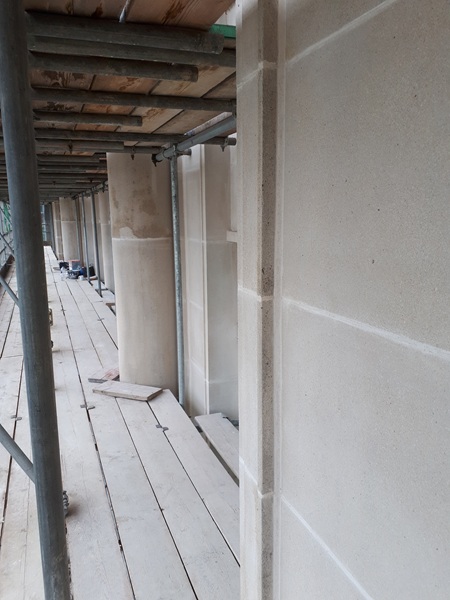
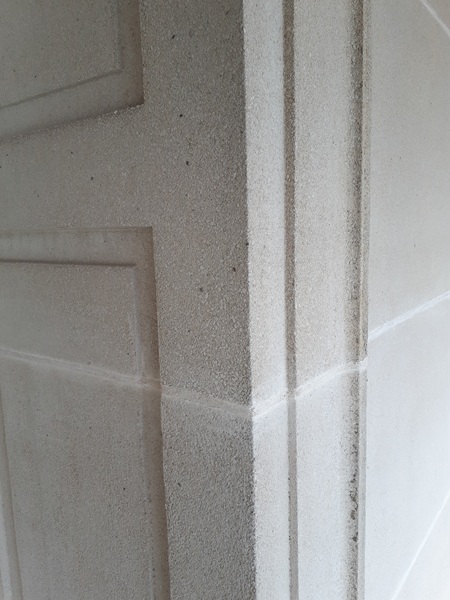
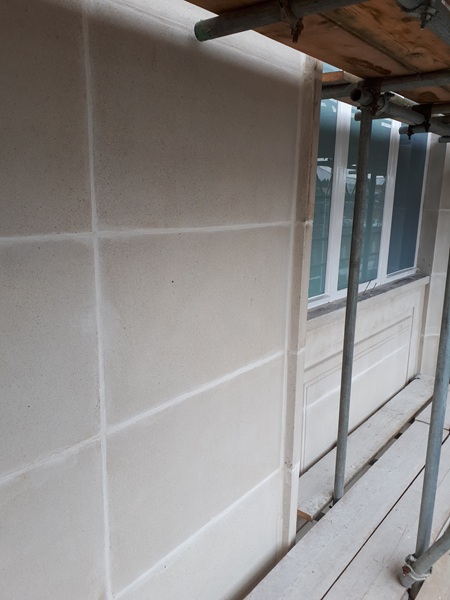
Other repairs needing attention were areas where sections of cladding had spalled. This had occurred where the steel reinforcement bars in some of the Portland stone panels had rusted. Rust becomes iron oxide and when this expands it very often forces the face of the stone to spall away or even split a stone in two, a phenomenom known as ‘Oxide Jacking’ or ‘Rust Burst’ and it causes considerable damage to our buildings up and down the country.
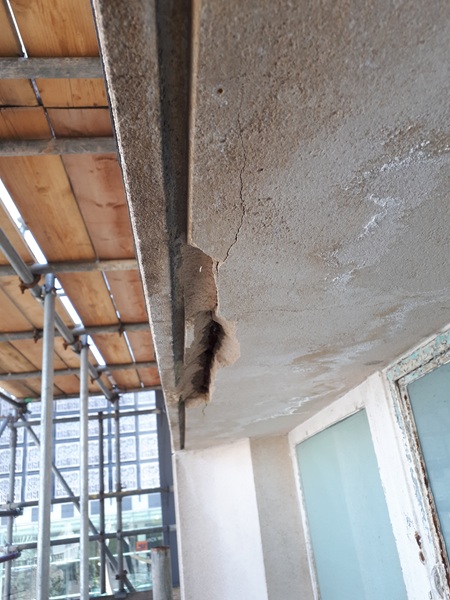
These areas were cut back and the existing re-bars descaled.
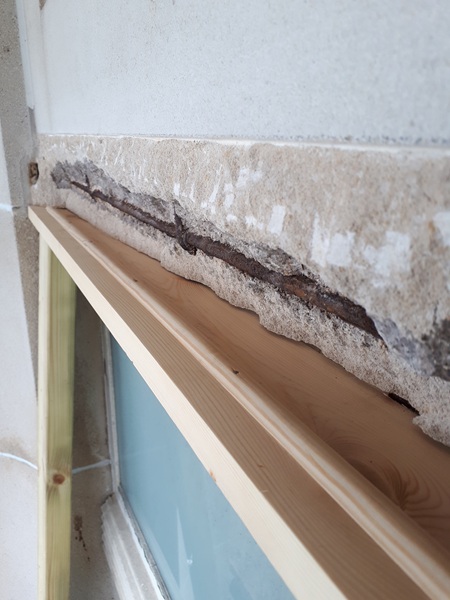
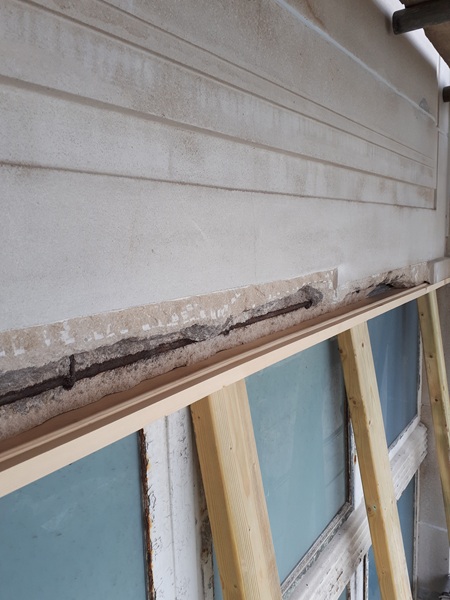
Then new 8mm thick threaded stainless steel armatures were drilled and fixed into place using epoxy resin.
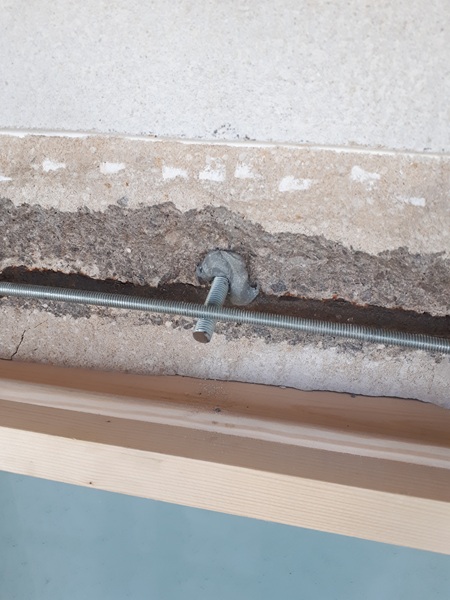
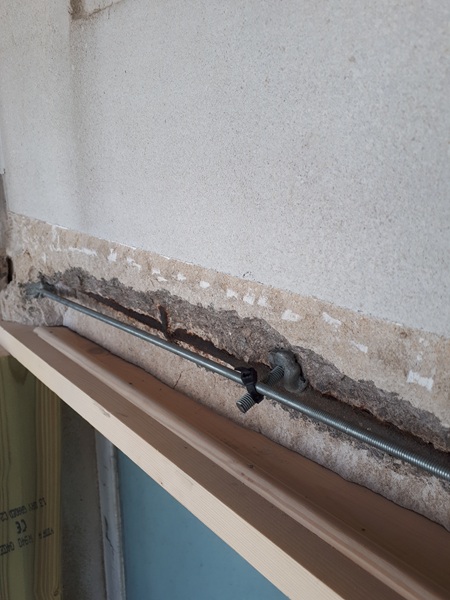
A Portland stone repair mortar was then used to build out the repair around the new armatures.
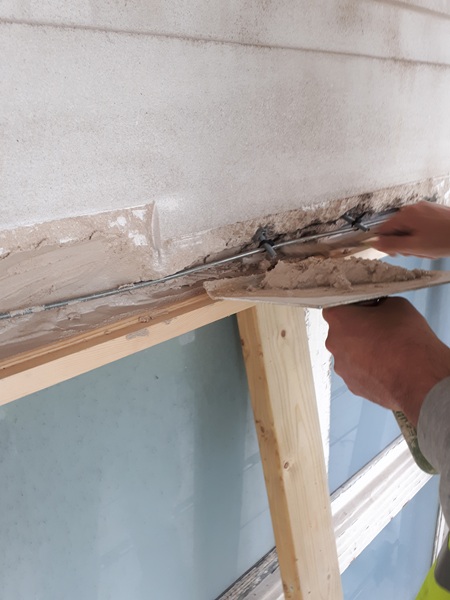
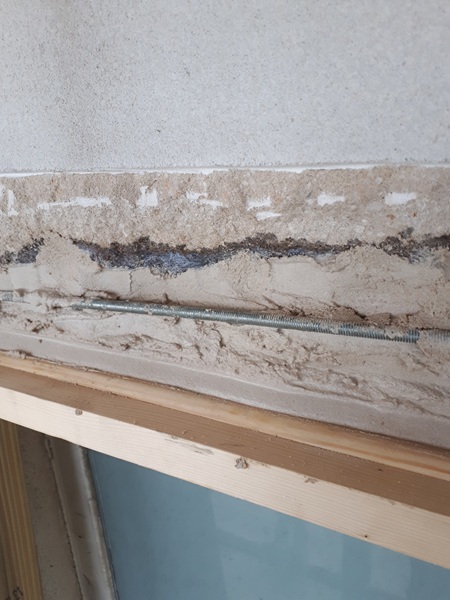
Deep areas were built out in gradual layers of 50mm thick and left to set.
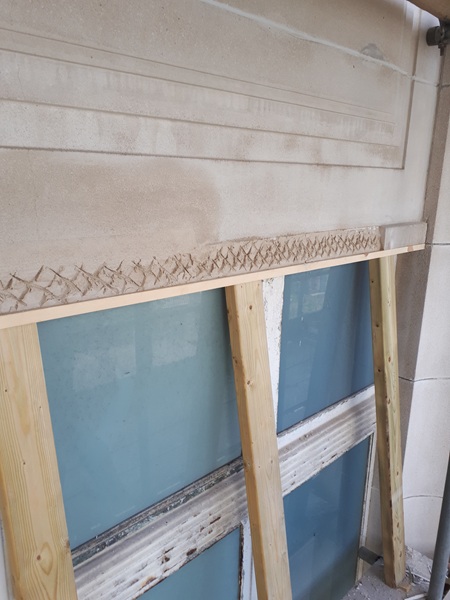
Once that had set, a final finishing coat was added to match the existing profiles.
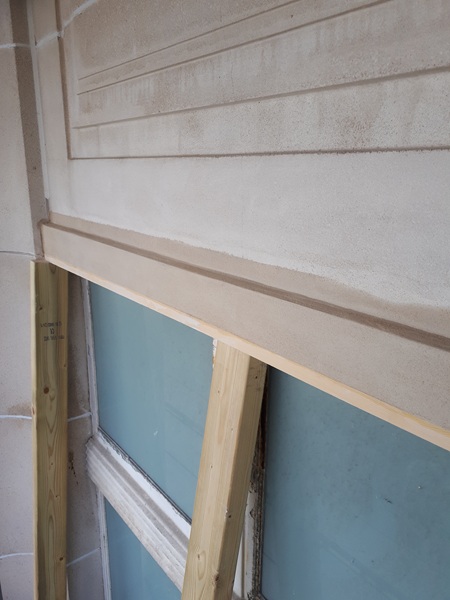
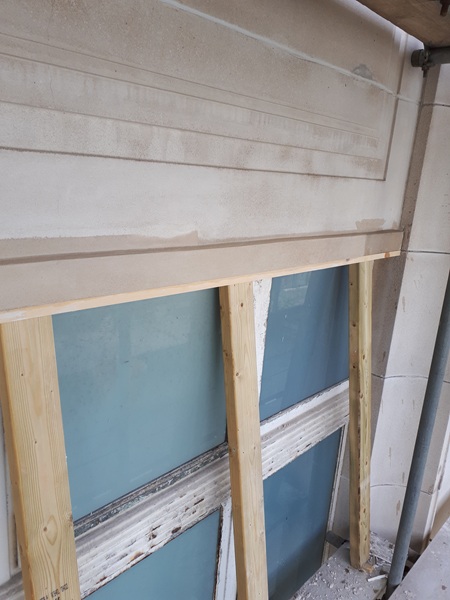
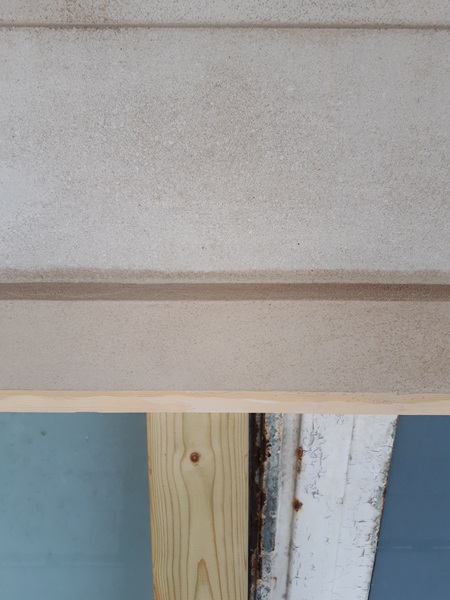
A few of these window heads had to be repaired.
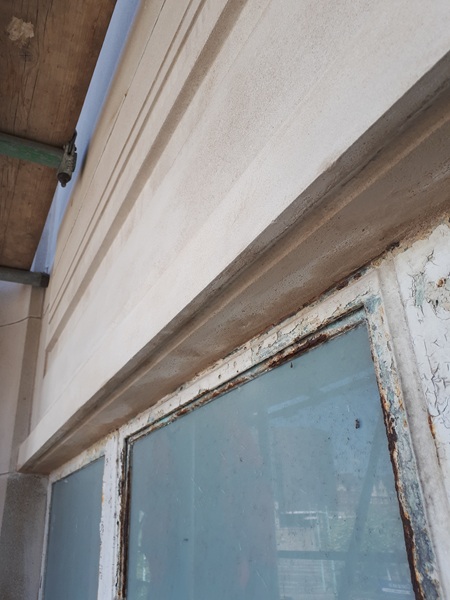
Some panel showed signs of hairline cracking. These were marked out.

Then a slot 25mm deep cut out across the line of the hairline crack to take a stainless steel clamp.
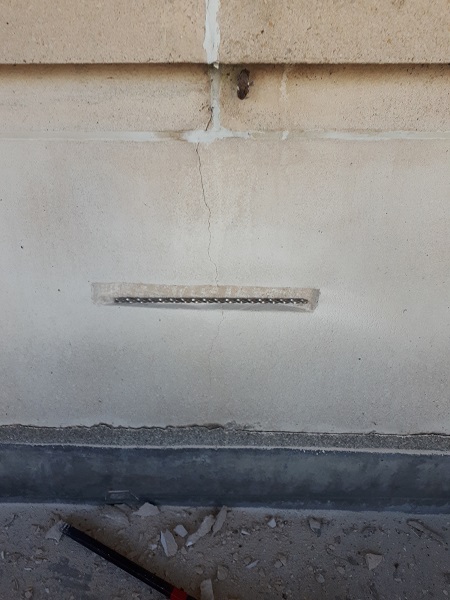
These clamps were then drilled into position and fixed with epoxy mortar.

Then finished off with a Portland stone repair mix.
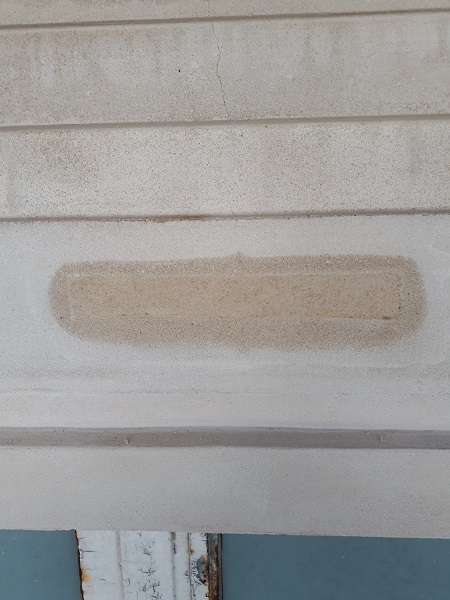
Various other cracked areas were cut out and repaired around the elevation.
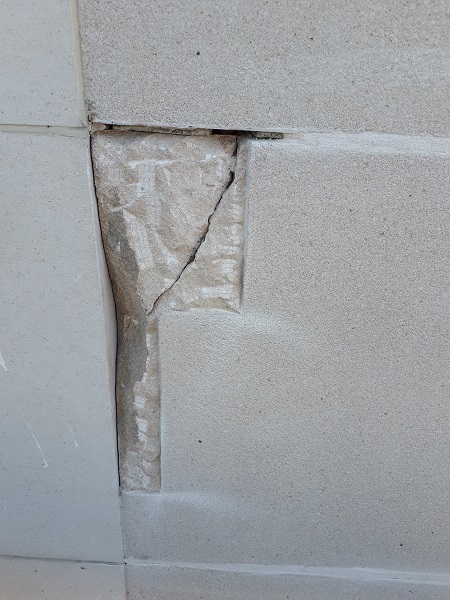

There are railings that stretch along the bottom of the windows on the first storey.
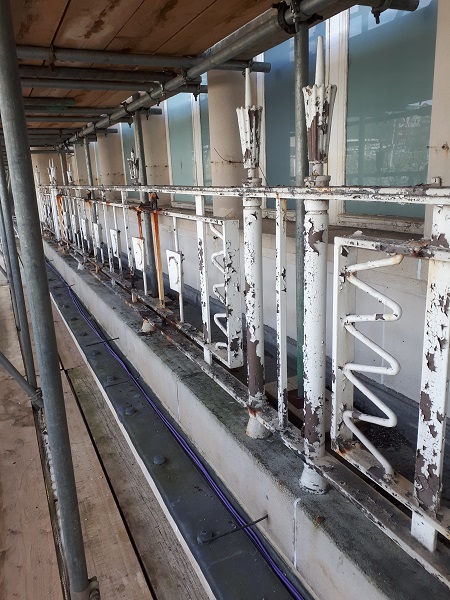
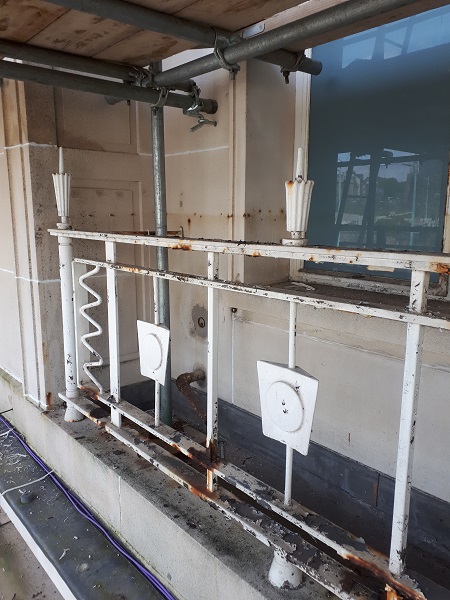

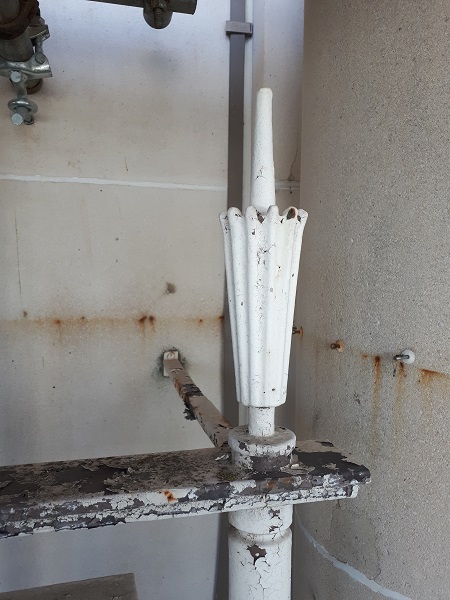
These were showing signs of considerable deterioration and rust corrosion. All of the railings had to be removed from site so they could be shot blasted, repaired, galvanised and then powdered coated. Pockets were cut out around the feet of the railings where they were fixed into the Portland stone so they could be removed.
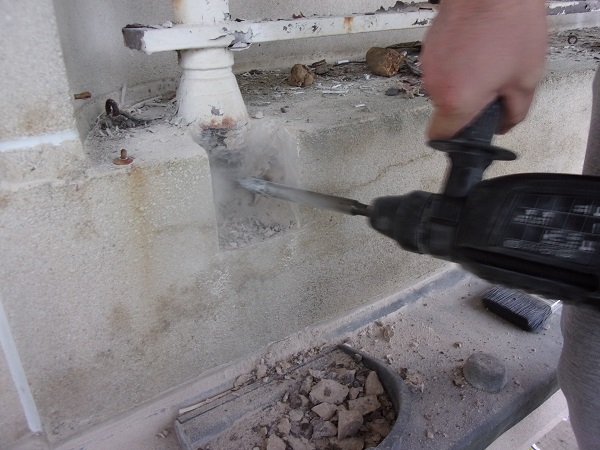
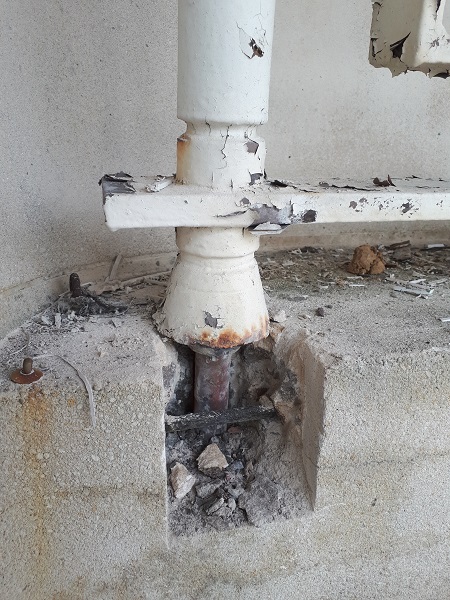
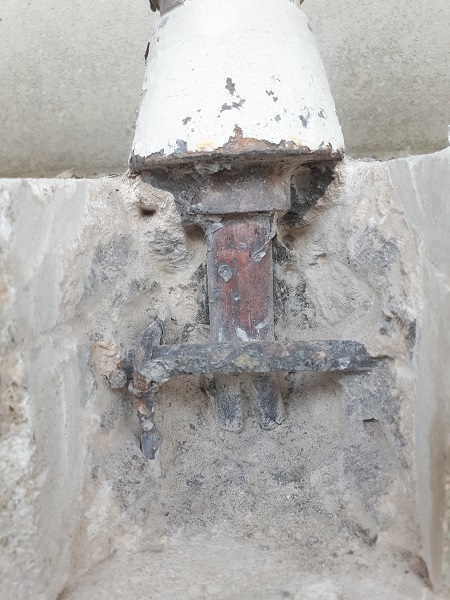
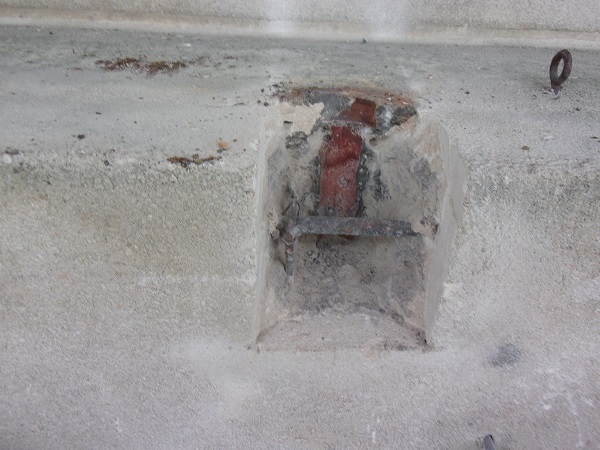
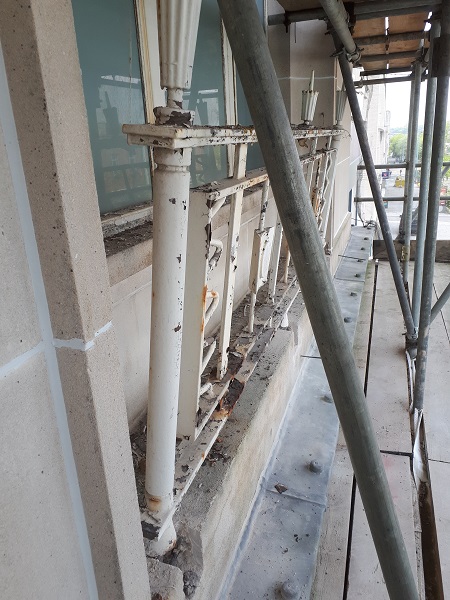

After a few weeks the railings arrived back on site to be re-installed. They were placed into position ready for fixing.


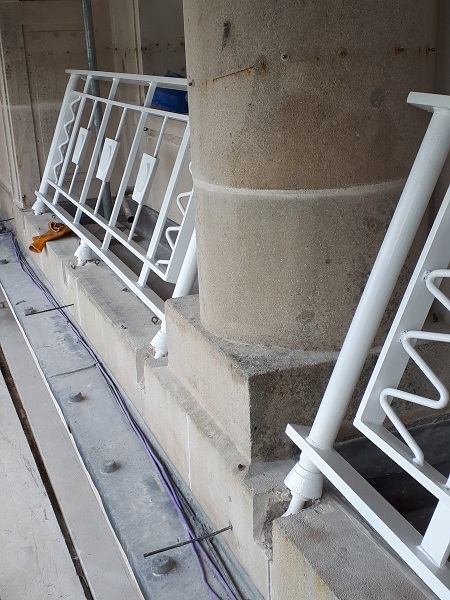

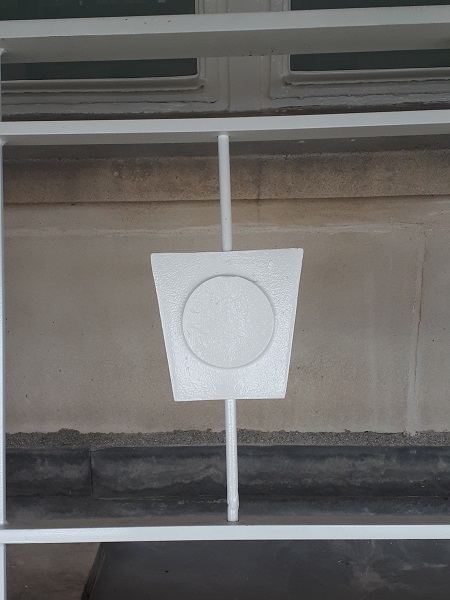
The feet were built in using ‘Renderoc GP’, a structural concrete repair mortar.
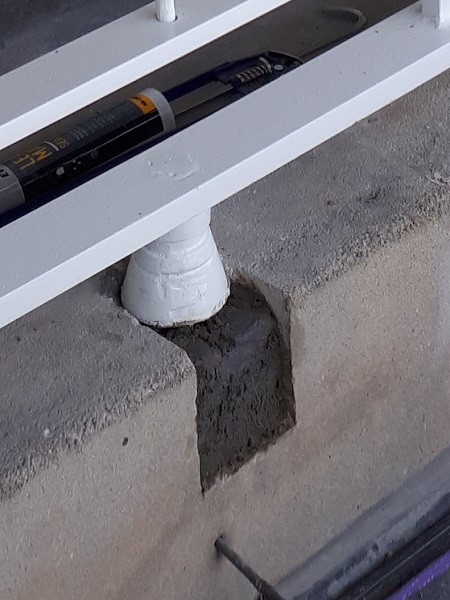
And these pockets were then finished off with a Portland stone repair mix.

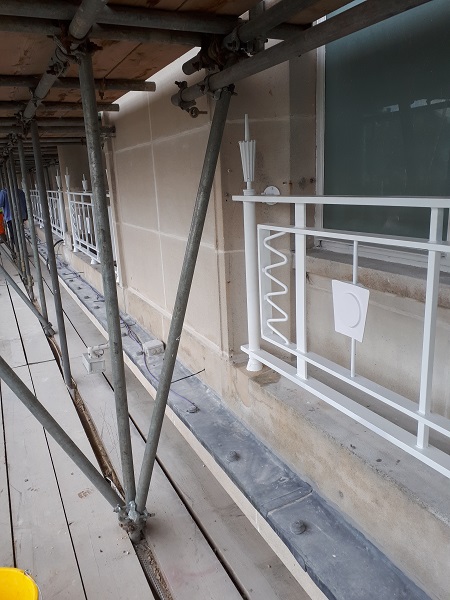
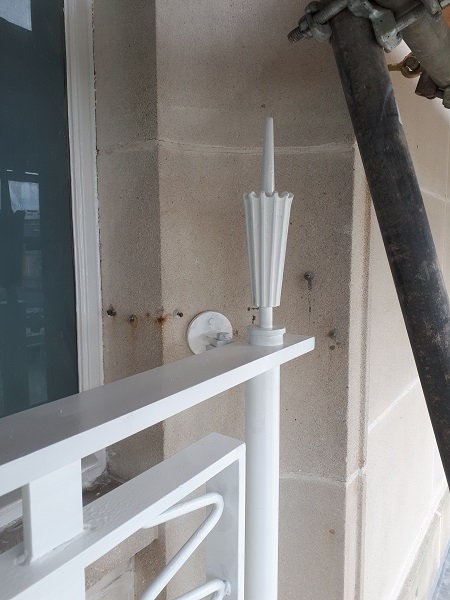
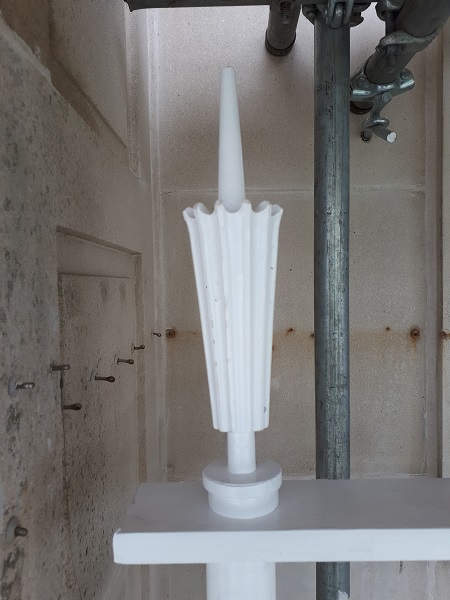
Once the railings were fixed back into place we were done, and the scaffold was taken down.
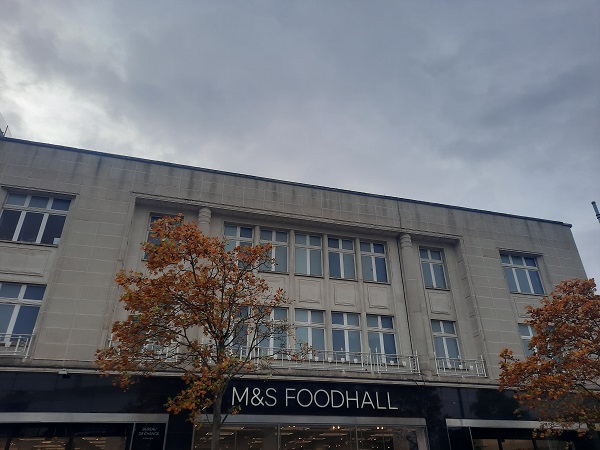
Apart from London, Plymouth has more Grade listed 1950’s buildings than anywhere else in the country.


